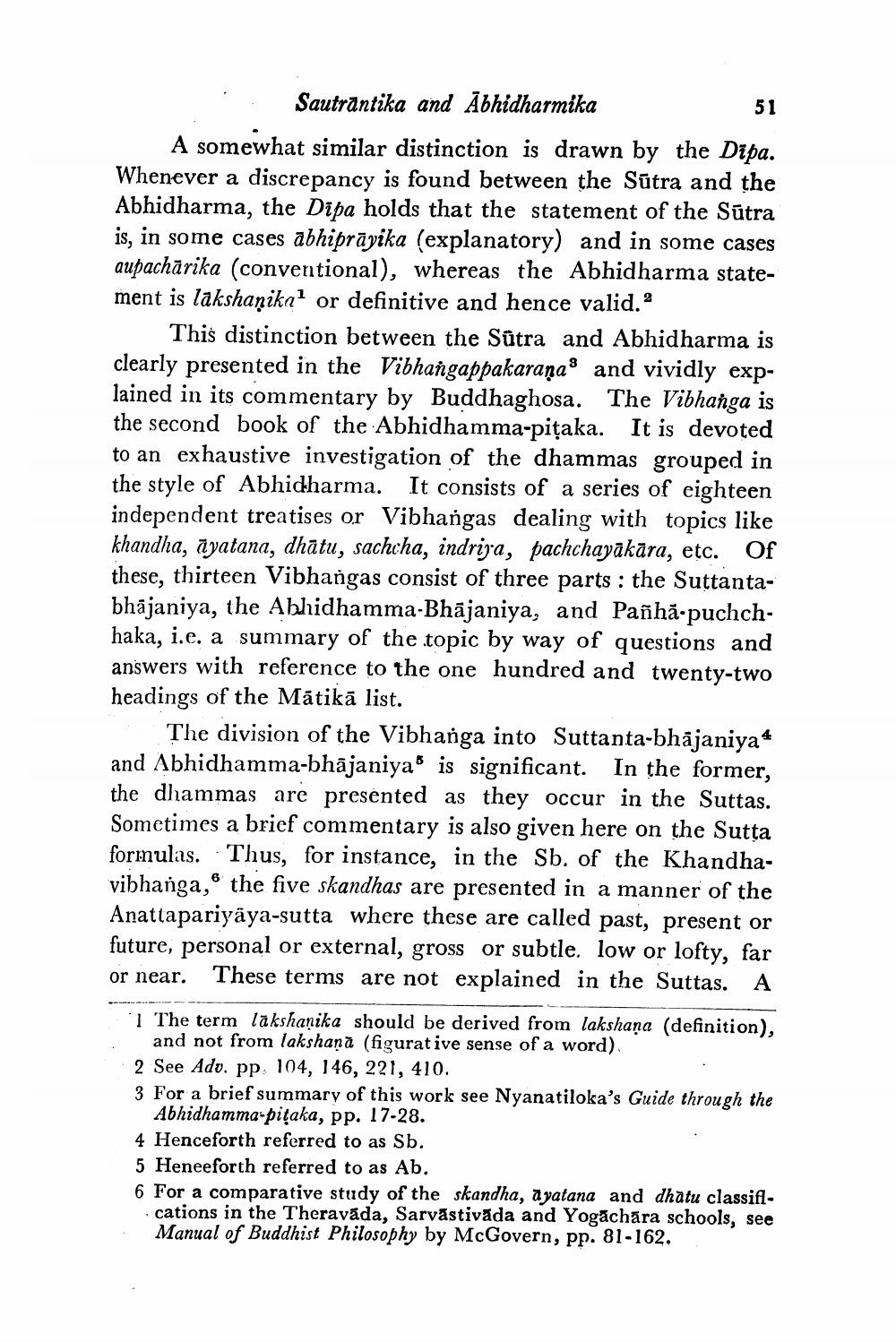________________ Sautrantika and Abhidharmika 51 A somewhat similar distinction is drawn by the Dipa. Whenever a discrepancy is found between the Sutra and the Abhidharma, the Dipa holds that the statement of the Sutra is, in some cases abhiprayika (explanatory) and in some cases aupacharika (conventional), whereas the Abhidharma statement is lakshanika? or definitive and hence valid. 2 This distinction between the Sutra and Abhidharma is clearly presented in the Vibhangappakarana and vividly explained in its commentary by Buddhaghosa. The Vibhanga is the second book of the Abhidhamma-pitaka. It is devoted to an exhaustive investigation of the dhammas grouped in the style of Abhidharma. It consists of a series of eighteen independent treatises or Vibhangas dealing with topics like khandha, ayatana, dhatu, sachcha, indriya, pachchayakara, etc. Of these, thirteen Vibhangas consist of three parts: the Suttantabhajaniya, the Abhidhamma-Bhajaniya, and Panha.puchchhaka, i.e. a summary of the topic by way of questions and answers with reference to the one hundred and twenty-two headings of the Matika list. The division of the Vibhanga into Suttanta-bhajaniya 4 and Abhidhamma-bhajaniya(r) is significant. In the former, the dhammas are presented as they occur in the Suttas. Sometimes a brief commentary is also given here on the Sutta formulas. Thus, for instance, in the Sb. of the Khandhavibhanga, the five skandhas are presented in a manner of the Anattapariyaya-sutta where these are called past, present or future, personal or external, gross or subtle. low or lofty, far or near. These terms are not explained in the Suttas. A 1 The term lakshaaika should be derived from lakshana (definition), and not from lakshana (figurative sense of a word) 2 See Ado. pp. 104, 146, 221, 410. 3 For a brief summary of this work see Nyanatiloka's Guide through the Abhidhamma-pitaka, pp. 17-28. 4 Henceforth referred to as Sb. 5 Heneeforth referred to as Ab. 6 For a comparative study of the skandha, ayatana and dhatu classifi cations in the Theravada, Sarvastivada and Yogachara schools, see Manual of Buddhist Philosophy by McGovern, pp. 81-162.




